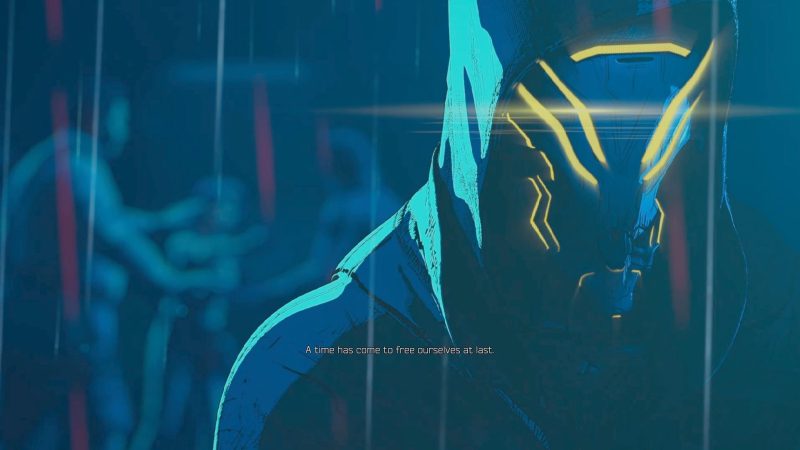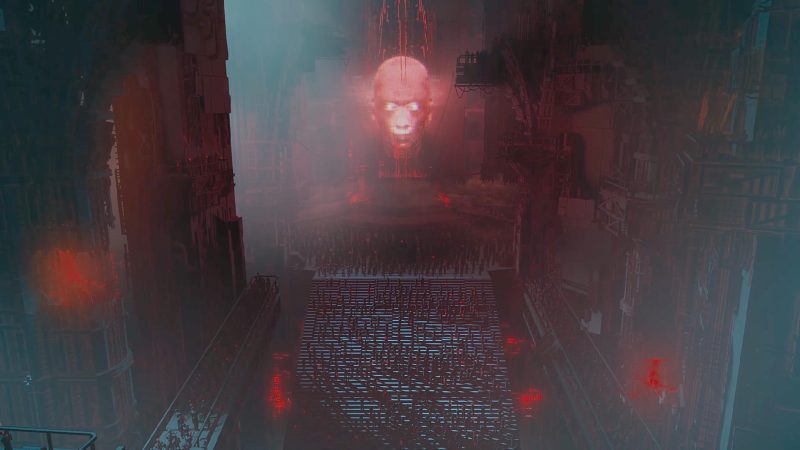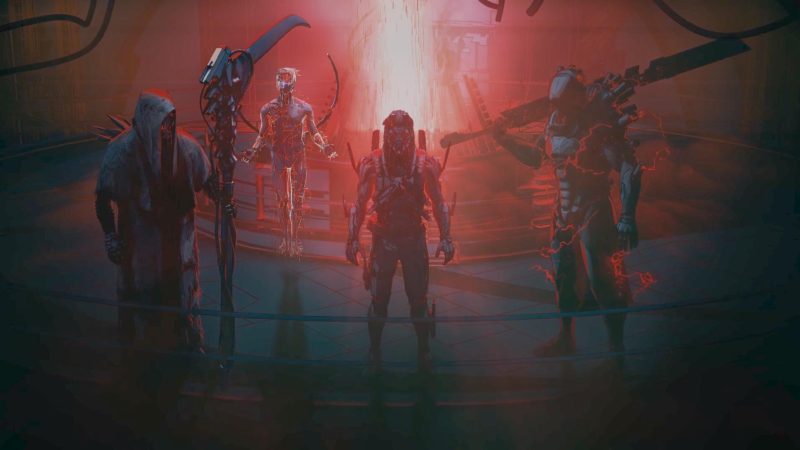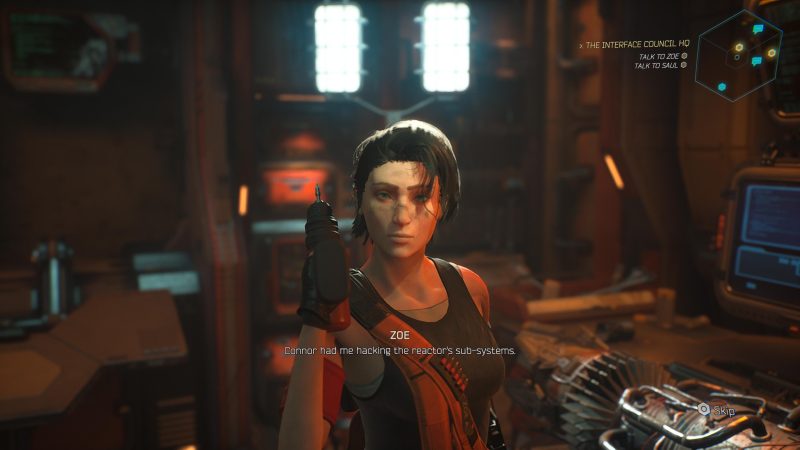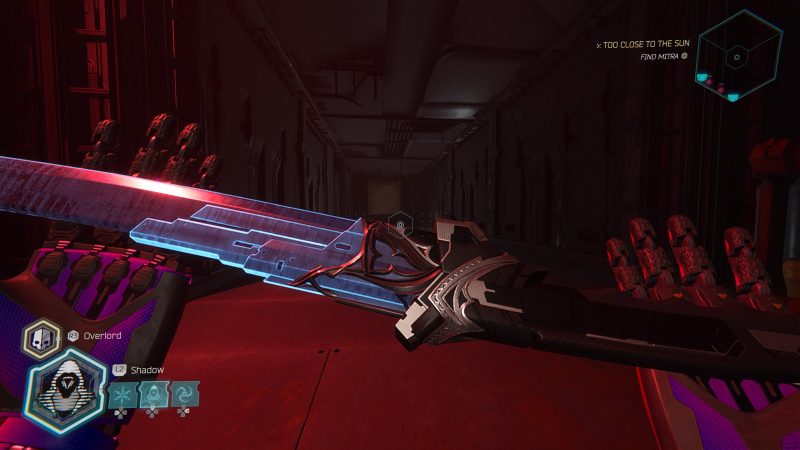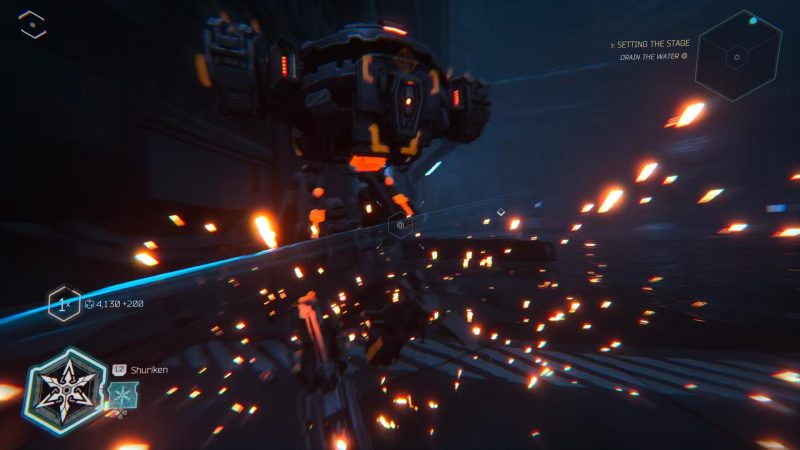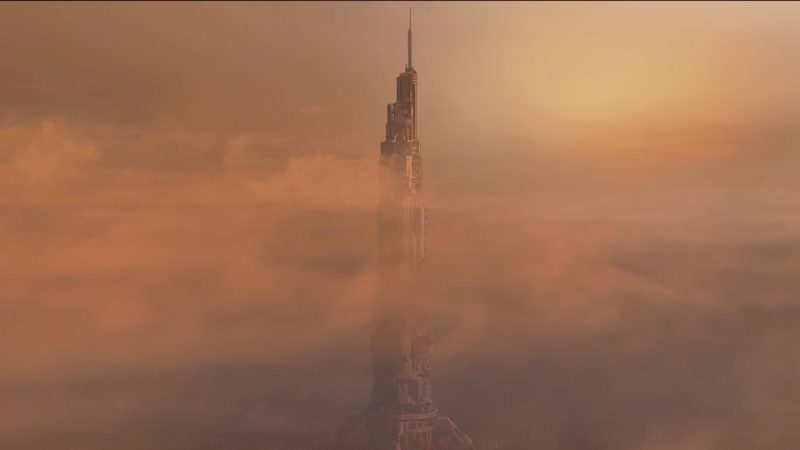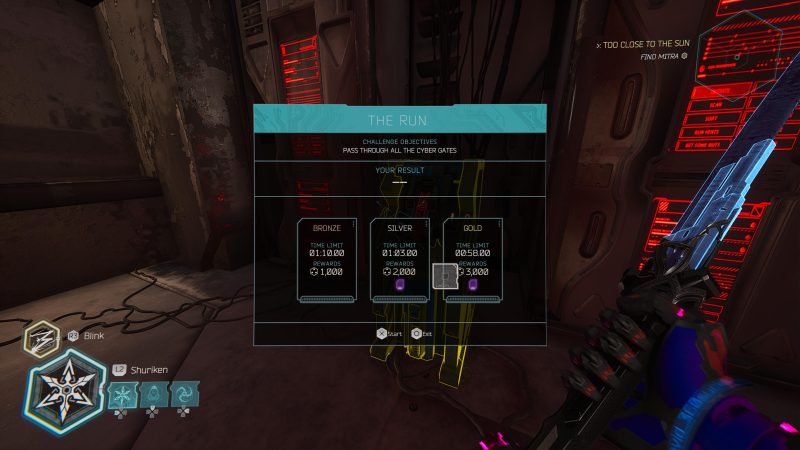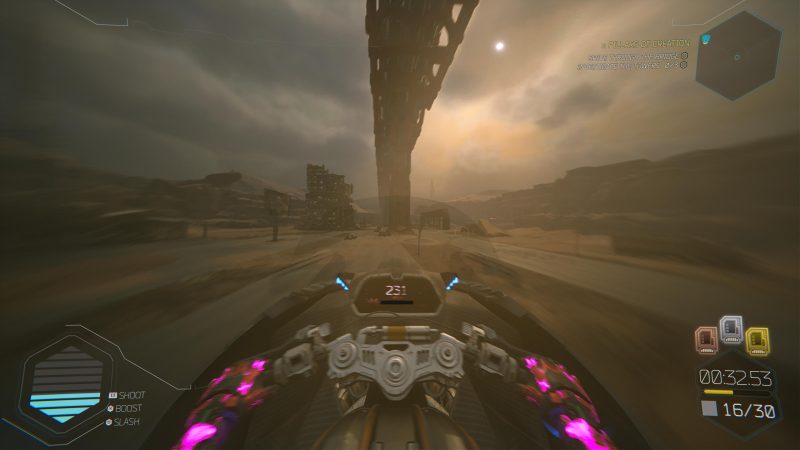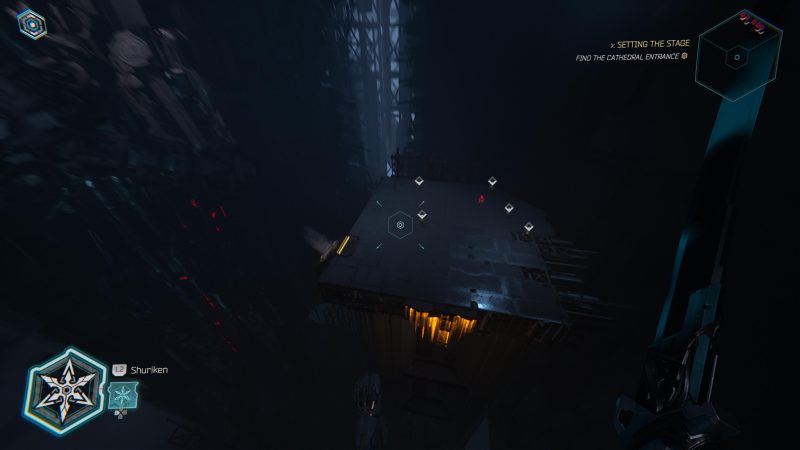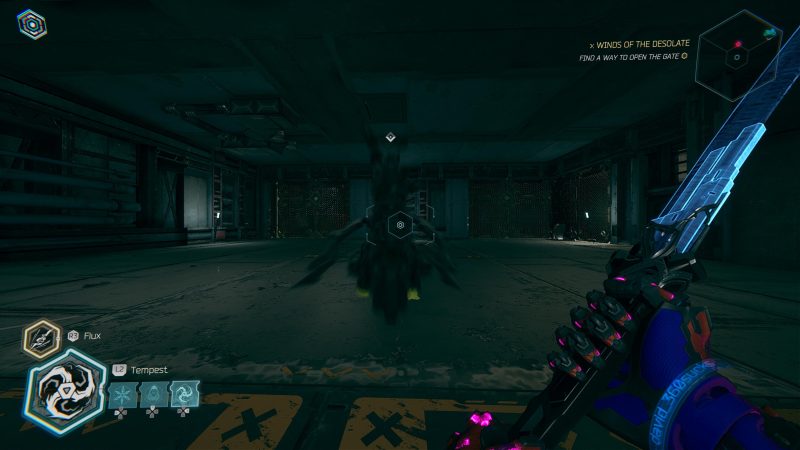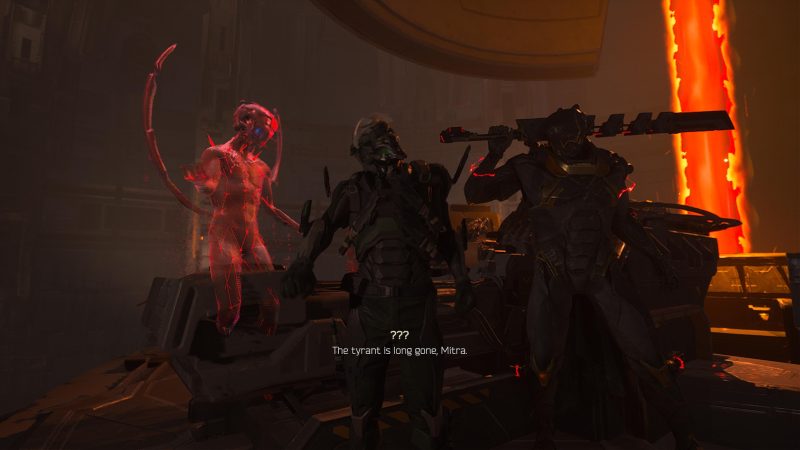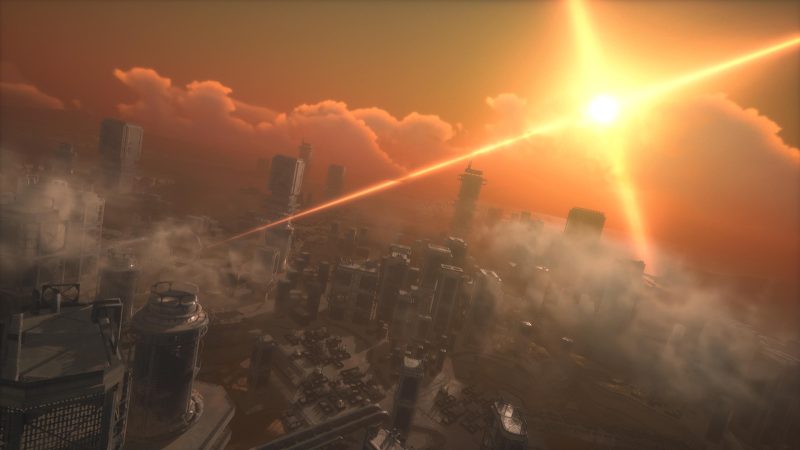
Ghostrunner 2 Review (PS5) – The first Ghostrunner released in the fall of 2020, and thanks to the state in which Cyberpunk 2077 launched, it definitely came out as the better sci-fi “cyber” game to pick up at the time, especially since Cyberpunk 2077 wasn’t really finished until this past September.
The first game was a fast-paced, one-hit-kill, cool as heck 3D action platformer that tested your reflexes set in a dystopian cyberpunk world that looked cool. While the story wasn’t perfect, it was serviceable enough and it wasn’t really your core focus anyway.
With the arrival of Ghostrunner 2, it’s clear that One More Level recognized the first games failings narratively, and while there are new aspects to the gameplay in this sequel, it’s the focus on the narrative that really sets it apart.
Unfortunately this only serves to highlight the story’s failings even more, and on top of level design that doesn’t ever really raise the bar compared to the first game, and some new gameplay features that either backfire or arrive too little too late, Ghostrunner 2 never really gets off the ground.
Instead this sequel ultimately feels like its running in the same circles as the first game, and is more of a “1.5” version of the first game than it is a true blue sequel.
Ghostrunner 2 Review (PS5) – Ghostrunner 1.5
Robotic To A Fault
If you don’t remember the story from the first Ghostrunner, that’s not too surprising because it’s not really the star of the show. You’re there to be a dope Jedi cyber-ninja, wall-running, coming down on your enemies in the sickest way possible all without taking a hit.
And that’s an incredible time. Ghostrunner 2 brings that energy, but it doesn’t feel entirely the same, and that’s because there’s a story that’s constantly getting in the way of what makes both Ghostrunner games excellent.
It’s made even more disappointing by the fact that it’s premise is a great foundation for what could’ve been a more interesting story. At the end of the first game, Jack, the Ghostrunner you hop along Dharma Tower as, has defeated his corrupted creator and the tyrant Keymaster/Adam that reigned over humanity’s remaining population, kept alive in a giant tower-city.
Now there’s a chance for the people remaining to lead themselves, but you quickly learn as you begin Ghostrunner 2 that it went about as well as it could’ve, in that the tower has split into rival gangs who all fight for control.
The rebel group you worked with in the first game, The Climbers, have grown and are one of these gangs, but a new party is soon thrown in the mix that changes the focus from fighting other Dharma gangs, to fighting the original Ghostrunners.
Asura, they’re called, each of them supposedly made with different strengths before the Jack’s model was created based on their design, a standardized model that’s essentially the best parts of each Asura, in theory.
I say the Asura are “supposedly” different because for three out of four of their boss fight’s there’s nothing that really stands out between them. Rahu The Avatar as a body-less AI has an incredibly more interesting and fun 3D platforming boss level in the Cybervoid, but the other three fights play out very similarly. More on those later.
Focusing on the story, the Asura have returned to resurrect the original of the originals, Mitra, the first Ghostrunner. With him revived, they plan to take over the tower and create a new world of half-mechanical half-human beings that all report to them, so that nothing may never have control over them again.
It’s here where I feel it necessary to point out that Mitra and the rest of the Asura could’ve just…left? I never felt like their desire to conquer everything was rooted very well, and with their creator/tyrant gone, they could’ve all lived free lives outside the tower.
Hell, that’s what half of them were doing all this time apparently. The Asura and Mitra individually are weak villains who exist to give you something to swing your sword at, with plenty of henchmen and robots in between boss fights.
At least Adam was a more interesting foe in the first game, even if the story did nothing to re-invent the dystopian sci-fi wheel. The Asura are boring by comparison, even Mitra, and he’s the only one you really get some backstory on.
Like the first game, this wouldn’t have been much of an issue if the story remained something more in the background, told mostly through conversations Jack has during gameplay with the other characters.
This time however, you’re returning to a hub area after each level, and have the opportunity to speak to each character and you’ll even have a few options of what to ask them most of the time.
The rest of the main cast, despite them being human, are about as robotic as the actual robots. It’s not entirely due to the voice acting, which I never felt was incredibly strong, it’s also largely that the way conversations jump in tone and topic don’t feel natural at all.
You have a few questions, talk to each of them Bethesda-style as they stand in the middle of your screen and speak at you. Kira is the one saving grace among the human characters, and even her parts aren’t anything spectacular.
Jack however, is the biggest offender when it comes to being boring and sounding robotic. It’s unfortunate to know that I liked Jack a lot better in the first game, where he spoke a lot less.
While I commend One More Level for trying to expand on the first Ghostrunner with a story that takes centre stage more than ever, it does nothing to show that it really deserves that focus, and just gets in the way of what really makes Ghostrunner 2 shine.
Feeling Cool As Heck
Certain games are just able to make you feel cool through just one aspect of the whole game. It could come from the setting, who your character is, what you’re actually doing in the game, or even just the music playing while you’re playing.
Ghostrunner makes you feel cool pretty much all the time. The average combat encounter could see you wall-run and then leap on top of an enemy, slicing them in half and then immediately using your slow-mo abilities to dodge a projectile and then killing that enemy with a shuriken.
From there you grapple jump towards another platform, slow-mo dodge another projectile then wall-jump while deflecting a barrage of bullets before silencing the machine gunner, and finally perfectly parrying an attack from a poor sword-wielding copy of you and driving your blade into their skull in a cool killing animation.
That’s just if there’s only a few enemies around. Bigger encounters see you dipping and dodging multiple projectiles and attacks from enemies, strategically taking each of them out or running at them head first for an ultimate test of your reflexes.
No matter your approach, the core gameplay and mechanics in Ghostrunner 2 just make you feel cool the whole time, and it’s those tightly crafted levels of enemy encounters mixed with parkour challenges that really make Ghostrunner 2 worth playing.
That’s not entirely surprising, because that’s what made the first game shine as well. The sequel also adds a couple of set-piece levels that take things up a notch, adding a motorcycle into the mix.
The platforming and combat challenges mixed in while going as faster than ever on a motorcycle make for some of the game’s best moments, particularly a certain boss fight I won’t spoil here where you’re on the bike the whole time outside the tower.
Grinding To A Halt
Unfortunately for Ghostrunner 2, while most of the levels are well done, two levels right in the middle of the game slow things down massively, and it’s made even more disappointing by the fact that these are the levels where you’re outside the tower.
Seeing what the rest of the world looks like should’ve been this interesting pull to discover what happened to the world for Dharma Tower to be all that’s left. You then head outside to learn that there’s a whole lot of nothing outside of Dharma.
It’s a barren wasteland, which, granted is what it’s supposed to be due to some cataclysmic event, you never really find out what. But that doesn’t mean it has to be boring. It’s also here that one of the new gameplay features for Ghostrunner 2 backfires.
The motorcycle is fine for the couple of levels where you’re racing to catch up with the Asura or in a standout boss fight trying to speed through to survive.
As a tool for exploring a semi-open world with vague waypoints as to where you need to go, it’s cumbersome and mainly awful to use. Driving the bike just stops feeling fun due to poor handling and how often you can find yourself caught on random debris.
It also doesn’t help that when you do try and explore the area for collectibles like different sword or glove skins, there’s no real reward for that exploration besides the collectible. There’s seemingly nothing from a world building perspective that’s worth seeking out.
You do upgrade your skills through finding these skill points throughout the levels, so at least those are worth searching for. But even then, most of them can be collected in each level by completing these quick side challenges that you can stop and try.
They’re all mostly fun challenges, but the way they’re isolated within each level, and the fact that you can’t select them from the main menu makes them forgettable as you keep playing the story. It also doesn’t help that like the two levels where you’re outside the tower, these challenges only interrupt any flow you might’ve been in and disrupt the pacing.
Unless you really want to find every collectible, what you’re rewarded with for taking a turn off the beaten path is a whole lot of nothing, almost like the game is saying to me through its environment that I shouldn’t be exploring and focusing on the main path instead.
To make matters worse that main path while outside the tower, isn’t much more exciting than the nothingness you get off the main road. You fight different skins of the same enemies, and barring some good parkouring and platforming challenges it’s more of a slog to get through it all.
These levels outside the tower take any momentum Ghostrunner 2 had leftover after the poorly executed narrative sections took the rest of it. Just like how One More Level tried to expand the story, these levels try to expand the gameplay in new ways from the first game.
Once again though its a change that has backfired massively, and I was very thankful to be returning to the tower when it was all over for the much more fun, and much better tight-knit levels inside the tower.
Same Old Song And Dance
I’ve talked a lot about what I don’t like in Ghostrunner 2, and there is a lot, but those come mainly from the things it’s at least trying to be better at in comparison to the first game. What I dislike the most about Ghostrunner 2 instead comes from something it’s absolutely not doing.
Beyond two stand-out boss experiences, the boss fights you’ll encounter which are mainly against each four members of the Asura are practically the same fight each time. The only thing that’s different in each fight is who you’re facing.
If each of the Asura were the original Ghostrunners, all made in their own unique ways with unique abilities, then that backstory is not something you actually see in practice during their fights. It’s wasted potential for what isn’t at all a bad premise.
What Ghostrunner 2 also doesn’t do is add any real enemy variety when you’re navigating through to the bosses. There are a handful of new enemy types introduced, most notably a dual sword wielding Ghostrunner-like goon, but they so rarely show up in combat I forgot they were even there by the time credits rolled.
I would also like to point out a chainsaw wheel that runs at you was one of the new enemy types I did like, and was used frequently after it was introduced while on the outside, but that still didn’t shake things up enough, especially when enemies that just run at you until they hit a wall are as common as the walls they hit in action games.
All the same kinds of enemies you fought in the first game are here in the sequel – which isn’t inherently a bad thing – but not enough new types of enemies are introduced and then effectively used throughout Ghostrunner 2’s runtime to make it feel like anything has really changed.
It’s all the same, and yes, the combat still works as well as it did the first time, but it’s no longer a new experience and gets old far faster than it did the first time around.
Ghostrunner 1.5
Ghostrunner 2 is not really a sequel. It might be in name, but in practice it’s much more of a 1.5 version of the first game. A couple of new things have been added, not all of them work, and the rest of it has been left the same.
My biggest gripes are everything I’ve recounted above, but some smaller ones include the revamped progression system which is far less interesting than the first one and doesn’t always feel effective.
I also encountered more than a few technical issues which at times caused my game to slow down to a slide-show speed, though thankfully these moments were few and far between.
I did however appreciate that you can now customize your sword and gloves on the fly, instead of needing to do it in menus before jumping in a level. I also liked an added game mode that sees you go through a series of combat and platforming challenges with a limited amount of lives. The further you can go without dying, the bigger the reward at the end.
Keep in mind these rewards are just more cosmetics, so your mileage may vary if you actually want them.
I really, really wanted Ghostrunner 2 to be a much more evolved sequel, but not every jump from new IP to sequel can be an Assassin’s Creed to Assassin’s Creed II scenario.
Unless you’re a massive fan from the first game, and are absolutely compelled to check it out, I’m inclined to say you can wait for a sale. If you’ve not played the first game, you’re better off just picking that up for what’ll no doubt be a lot cheaper.
Ghostrunner 2 is available on PS5 on October 26, 2023.
Review code generously provided by the publisher.
